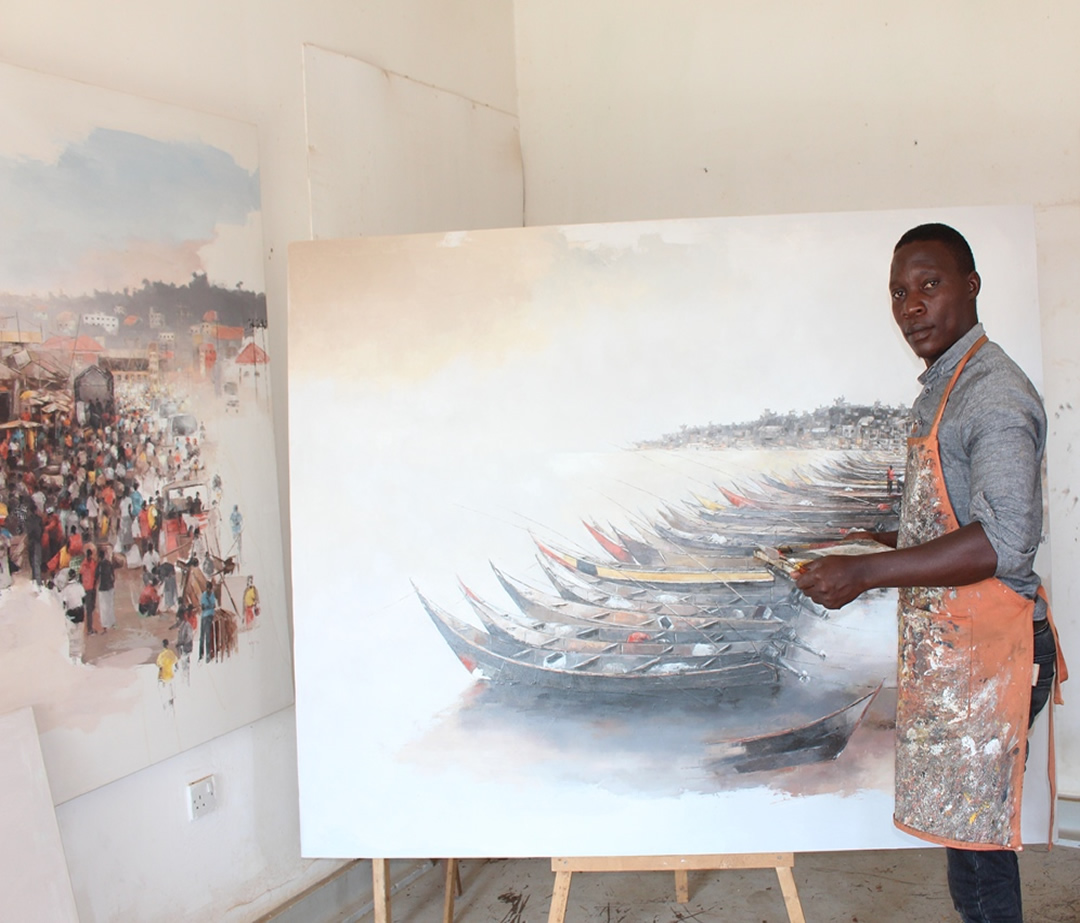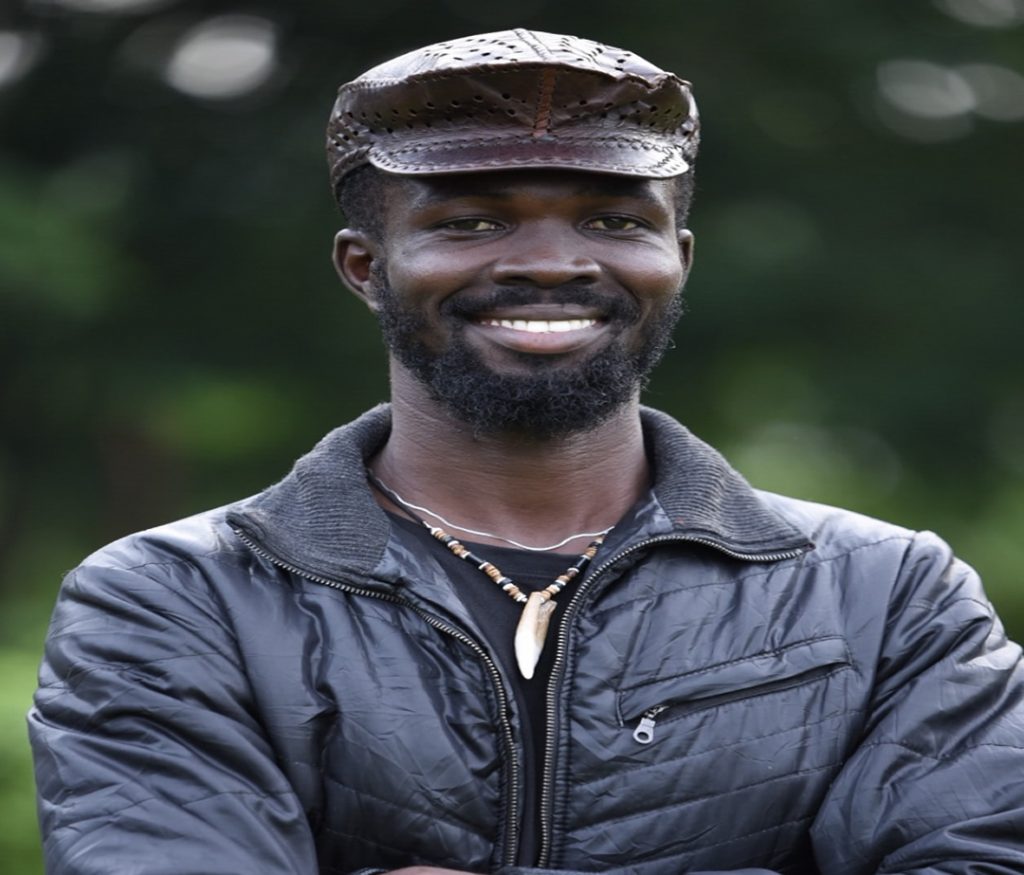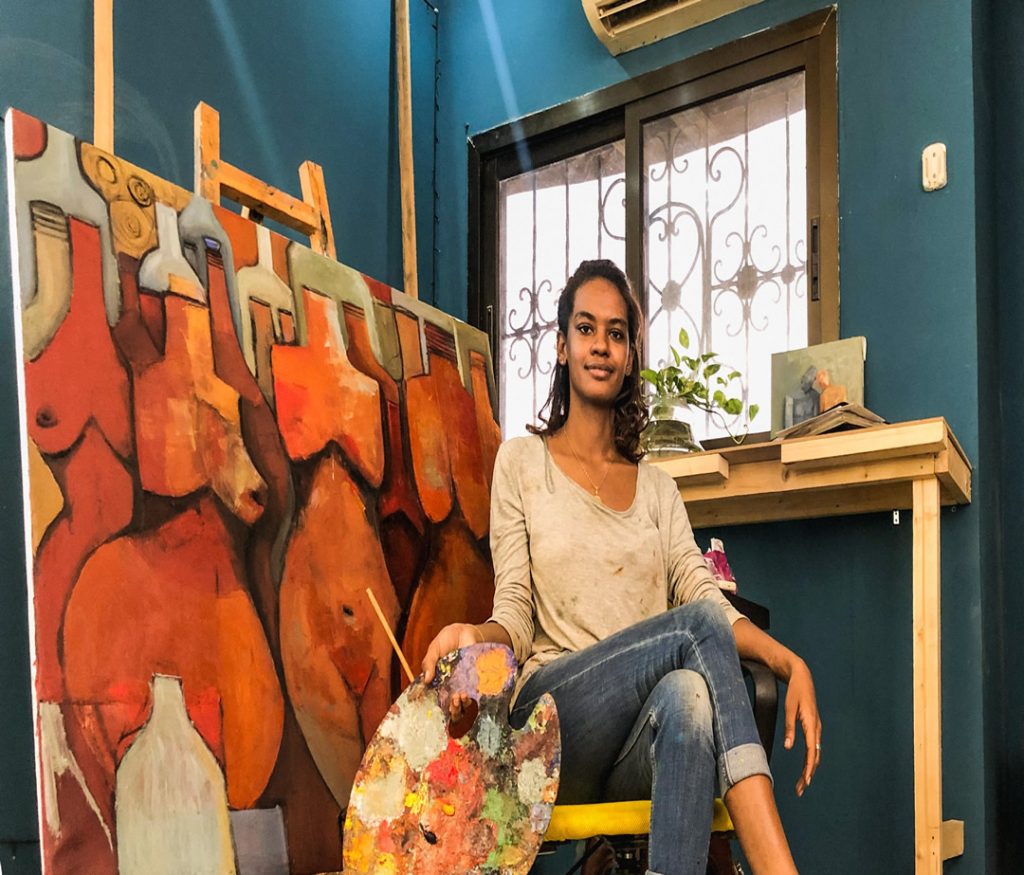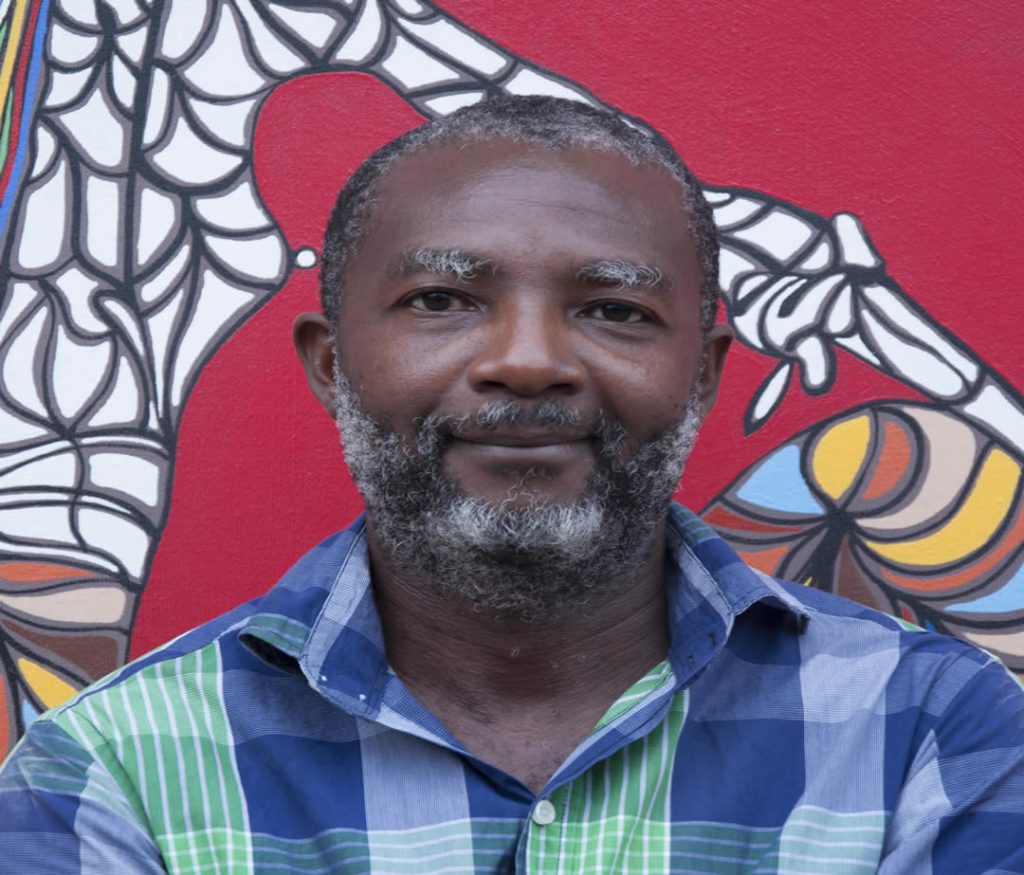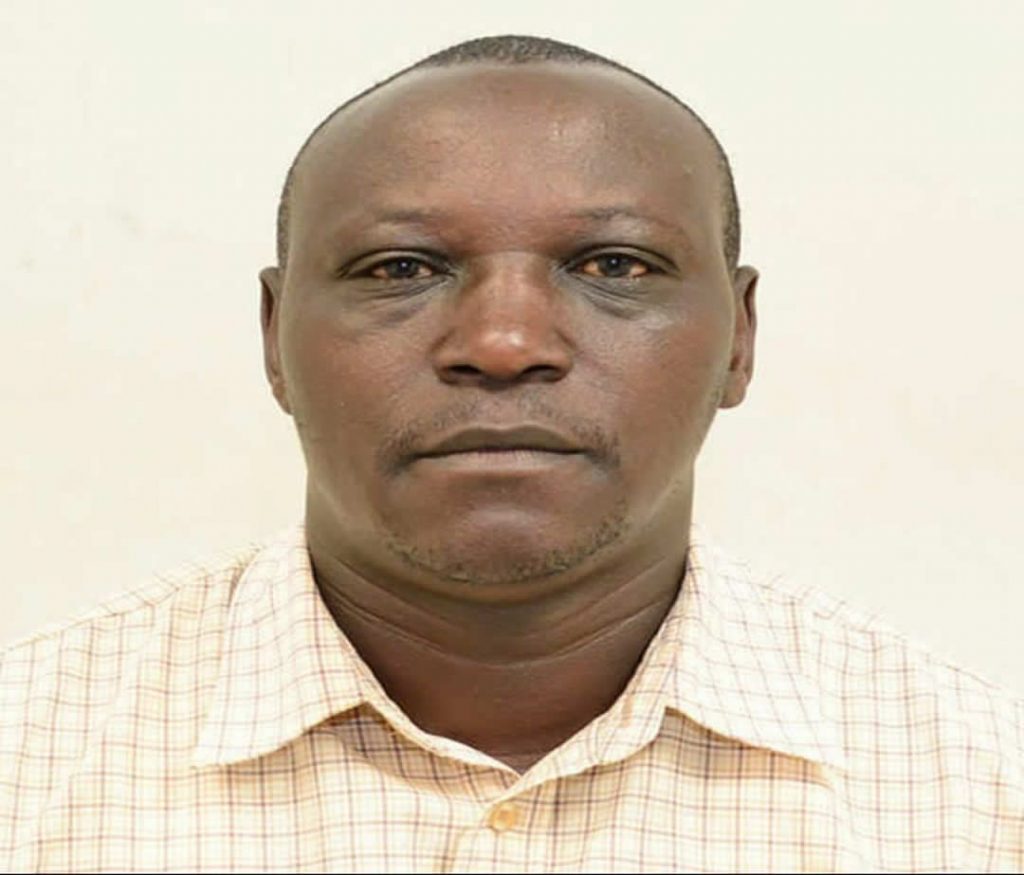Not very far from the artist’s studio, one can hear the constant piercing sound of metal fabricators welding and hammering away at aluminum- steel metal. They fabricate the material to produce windows and doors for the booming construction trade in the locale. Across the busy narrow street, boda- boda cyclists (mobile motorcycle taxi) whizz past each other ferrying passengers or merchandise on their motorcycles and right oppositely at a nearby derelict building, a few metres from the dusty main road, are small grocery stalls attended to by young women with children strapped on their backs as they attend to random customers. This busy atmosphere, reminiscent to the fast growing economic suburb towns across the country, is what defines Bweyogere town, located almost 7 km from Kampala, the capital of Uganda. Ismael Kateragga’s studio is located here, in the midst of this ordinary life, filled with daily arduous demands to survive. The brisk human activities outside the perimeters of his studio, a former modernist residential house, provide an impetus for the almost soft spoken artist, to create paintings that evoke scenery that is identical to what is experienced on the narrow streets and far beyond.
Kateregga does not encounter such vigorous lifestyle, coupled with daily human survival, as a novel experience. Born in Luweero district, in the central part of Uganda, the artist from a young age was exposed to the regular demands of making ends meet that are typical to many rural settings across the country. In this, Kateregga often dashed to the village markets to chase after errands for this parents, went to the village well to fetch water alongside his siblings and time and again crossed paths with middle-aged men waking up early in the morning to go and eke a living for their families. It is this experience, at an early stage, which triggered his creative imagination to lean towards the theme of social-economic human survival within the context of urban and rural settings. Hence, the artist paints rural and urban sceneries of people going about their day to day life. It could be a busy market day in the outskirts of the city, fishermen or boats at a landing site or simply solitary dingy settlements.
But these paintings are never complete without a nuance of symbolism attached to them. The artist uses earthy colours, with particular concentration on greys, browns and blues as a gesture to portraying a more realistic narrative on the subject matter. In this, the artist is eager to invoke sceneries in his paintings that are familiar to the everyday person, regardless of social strata or age. The boats docked at Kiyidi or Buikwe landing sites or shanty settlements situated along the borderline of a long winding railway line, are recognizable by the viewer who has visited such ordinary sites before. Yet intricately, the artist is fervently closely connected to these haunting images he creates on canvas by virtue of his ordinary character. Kateregga is largely a regular individual who freely interacts with anyone he meets albeit his remarkable success on the Kampala contemporary art scene. On the other hand, his stance to maintain his studio space, now for more than a decade, in an area that is mainly inhabited by the average citizenry, speaks to his modesty.
“The paintings are manifestation of myself,” the artist will plainly tell you, as he reclines in a couch pressed against one of the walls of his spacious studio. He leans forward and explains further, “I could be any of those people in that painting” he says as he points to one painting showcasing a familiar locale that has shanty settlements lined up on both sides of the railway line. A train is depicted running on the rail with tiny human figures indistinctly composed on the right hand side of the painting. Ordinarily, they could be standing and waving at any possible passengers in the train. The train continues to be a serious attraction for many urban dwellers especially those that reside on the periphery of the city. Because of its novelty, every time it’s heard from miles away, people line up on the side walk and begin to randomly wave at the empty coaches.
Furthermore, the technique of creating empty space within the painting enables inclusion of the viewer into the whole composition. Although the artist is eager to express his inner self in his work, he is quickly mindful not to substitute the audience’s presence in the art, with his emotions. Therefore, the concept of the empty space is an artistic ploy to invite the audience into the painting and draw their own interpretation based on the subject matter. For the case of the shanty settlements that border a railway line, such depiction points to the absurd poor urban planning in Kampala that can give way to possible fatal accidents in case the train derails.
Through such approach, it becomes obvious that the artist is clearly aware of the much needed relationship between artist and audience. While the artist proposes ideas on canvas through his creative ingenuity, it is the audience to complete such composition with their understanding. This seamlessly engagement is much inspired by the artist’s passion for ordinary themes that can be found in everyday life experiences.
Kateregga works with oils, egg tempra and acrylics in his painting. He majored in drawing, painting and advertizing design from Margret Trowell School of industrial and Fine Art Makerere.

